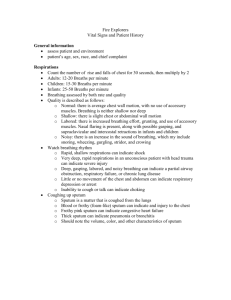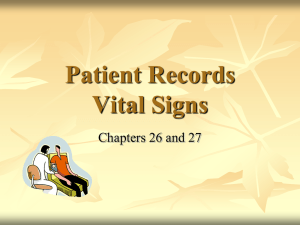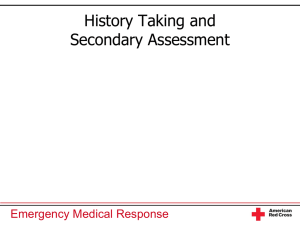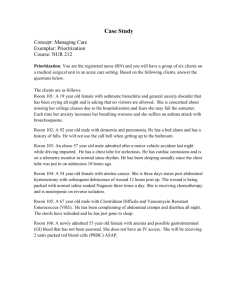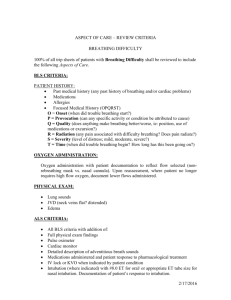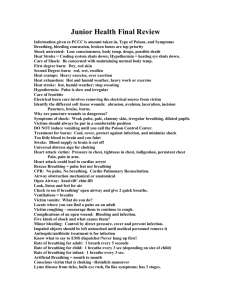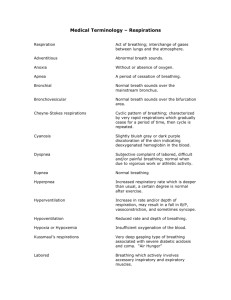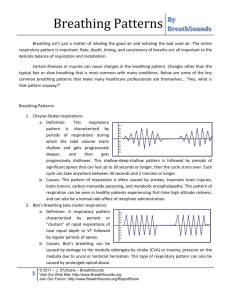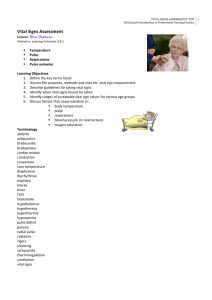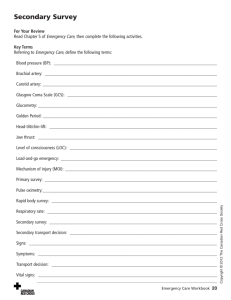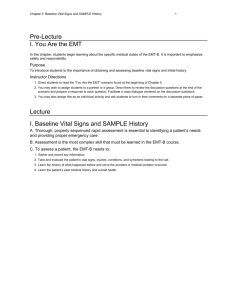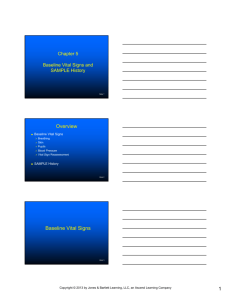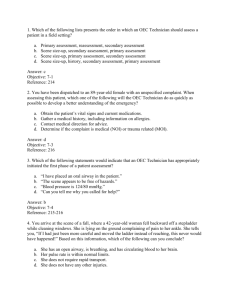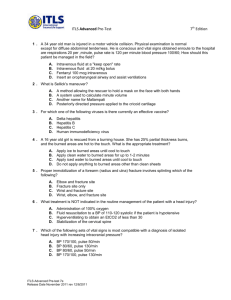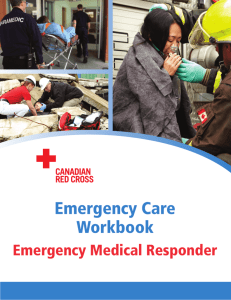O.P.Q.R.S.T. - Fire Training Toolbox
advertisement
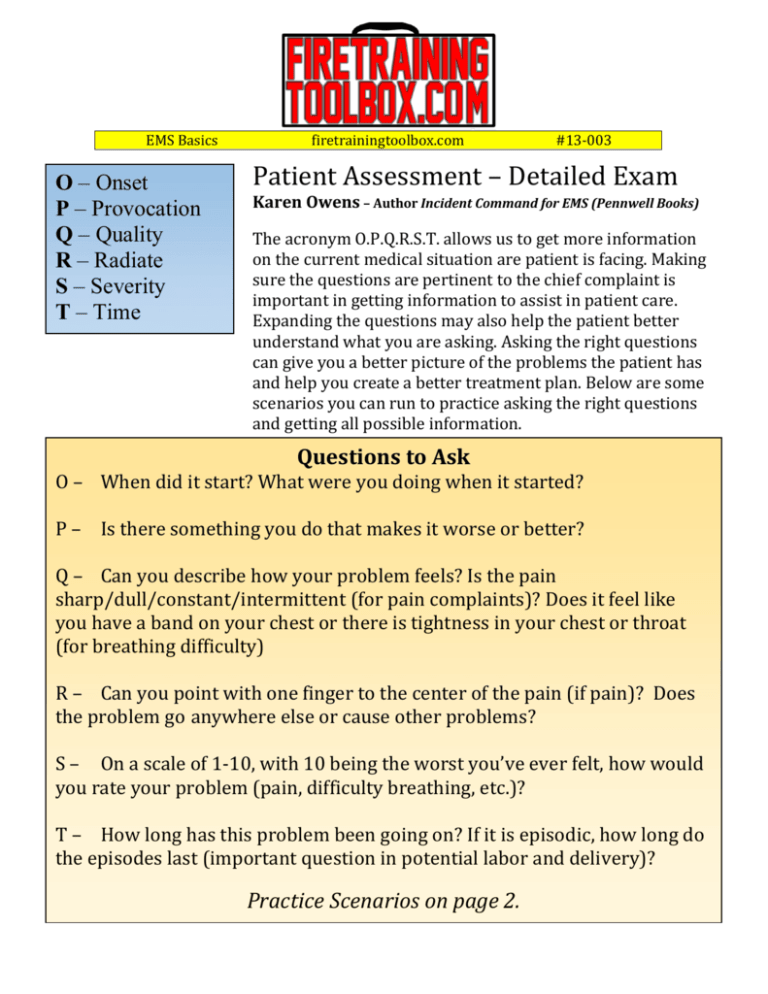
EMS Basics O – Onset P – Provocation Q – Quality R – Radiate S – Severity T – Time firetrainingtoolbox.com #13-003 Patient Assessment – Detailed Exam Karen Owens – Author Incident Command for EMS (Pennwell Books) The acronym O.P.Q.R.S.T. allows us to get more information on the current medical situation are patient is facing. Making sure the questions are pertinent to the chief complaint is important in getting information to assist in patient care. Expanding the questions may also help the patient better understand what you are asking. Asking the right questions can give you a better picture of the problems the patient has and help you create a better treatment plan. Below are some scenarios you can run to practice asking the right questions and getting all possible information. Questions to Ask O – When did it start? What were you doing when it started? P – Is there something you do that makes it worse or better? Q – Can you describe how your problem feels? Is the pain sharp/dull/constant/intermittent (for pain complaints)? Does it feel like you have a band on your chest or there is tightness in your chest or throat (for breathing difficulty) R – Can you point with one finger to the center of the pain (if pain)? Does the problem go anywhere else or cause other problems? S – On a scale of 1-10, with 10 being the worst you’ve ever felt, how would you rate your problem (pain, difficulty breathing, etc.)? T – How long has this problem been going on? If it is episodic, how long do the episodes last (important question in potential labor and delivery)? Practice Scenarios on page 2. EMS Basics firetrainingtoolbox.com Medical Scenario 46 year old patient states s/he has chest pains Initial Assessment A – Airway patent B – Patient breathing C – Pulses present, no major bleeds, skin – pale, cool, clammy OPQRST SAMPLE O – 10 minutes prior to calling 911 S – Pain, sweaty, difficulty breathing P – moving around aggravates the pain A - none Q – Crushing, sharp M - nitro stat R – Radiates into jaw and left arm P – heart attack, angina S–8 L - dinner T – Constant – no decrease in pain E – sitting in chair, watching T.V. 1st Vital Signs BP – 110/78 Pulse – 100 – Rapid, Strong Respirations – 14–labored Pupils – Normal Skin – Cool, Pale, Dry 2nd Vital Signs BP – 98/68 Pulse – 100 – Rapid, Strong Respirations – 12 – normal Pupils – Normal Skin – Cool, Normal, Sweaty Medical Scenario 46 year old patient states s/he has difficulty breathing Initial Assessment A – Airway patent B – Patient breathing C – Pulses present OPQRST SAMPLE O – 10 minutes prior to calling 911 S – Flushed, Panting P – No pain, just chest tightness, hard to breathe A – none Q – N/A M - Albuterol R – None P – asthma S–8 L - Lunch T – Constant E – Working out 1st Vital Signs BP – 110/78 Pulse – 100 – Rapid, Strong Respirations – 14–labored Pupils – Normal Skin – Flushed, Warm, Sweaty 2nd Vital Signs BP – 98/68 Pulse – 100 – Rapid, Strong Respirations – 12 – normal Pupils – Normal Skin – Flushed, Normal, moist #13-003
